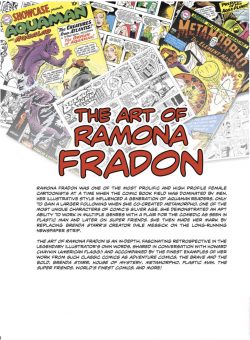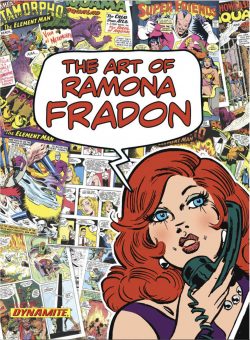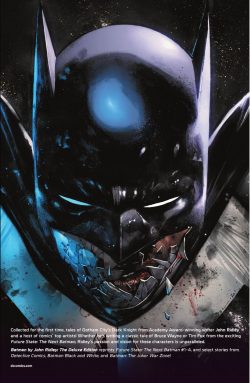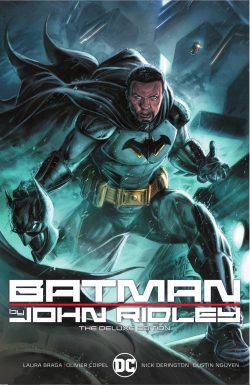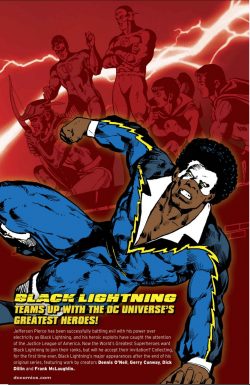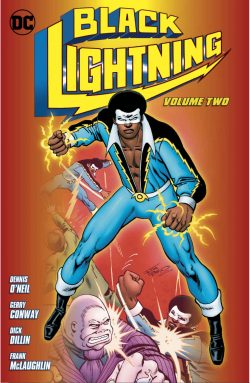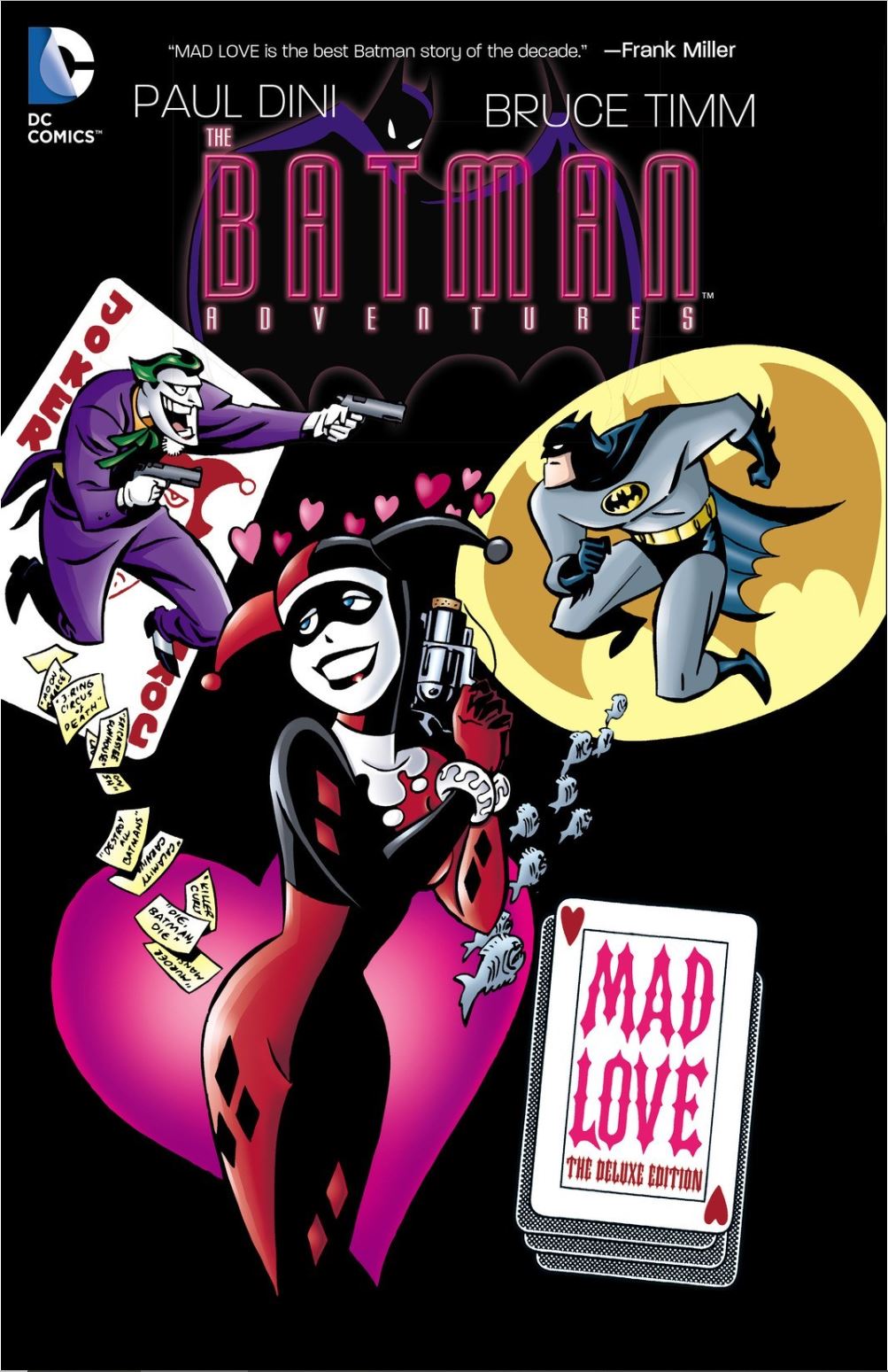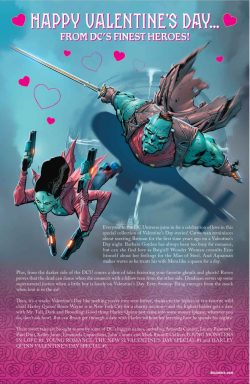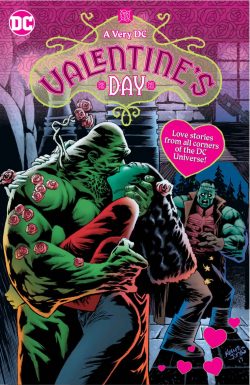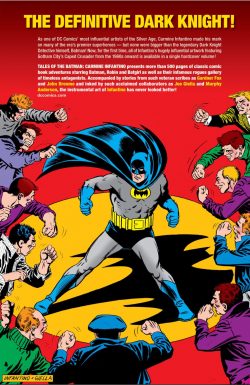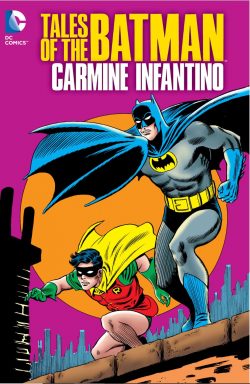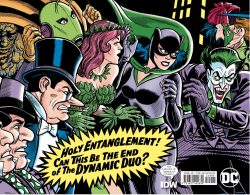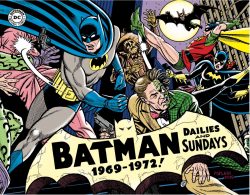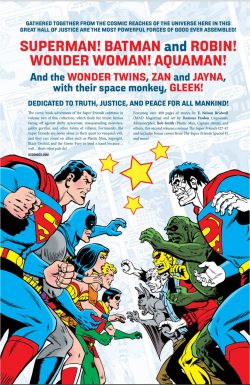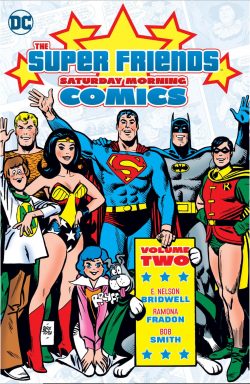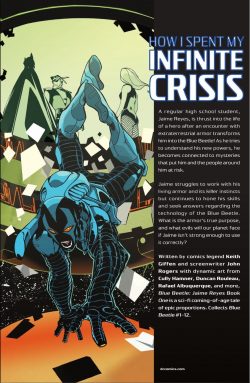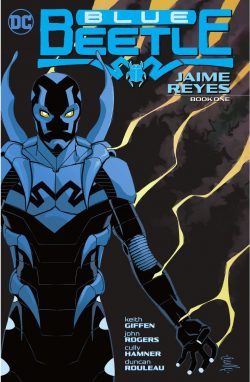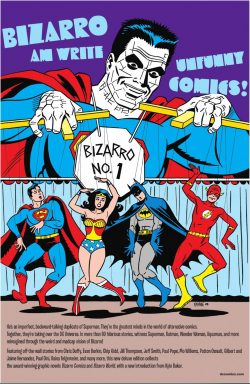
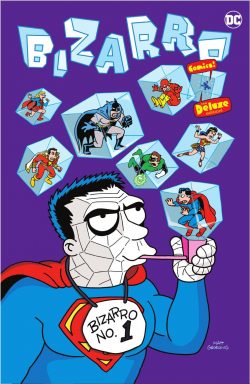
By a big bunch of very funny people AKA Jessica Abel, Todd Alcott, Rick Altergott, Peter Bagge, Kyle Baker, Gregory Benton, Charles Berberian, Aaron Bergeron, Nick Bertozzi, Ariel Bordeaux, Rand & David Borden, Ivan Brunetti, Eddie Campbell, Jim Campbell, Dave Cooper, Leela Corman, Mark Crilley, Jef Czekaj, Farel Dalrymple, Brian David-Marshall, Paul Dini, Paul Di Filippo, D’Israeli, Evan Dorkin, Mike Doughty, Eric Drysdale, Ben Dunn, Philippe Dupuy, Sarah Dyer, Phil Elliott, Hunt Emerson, Maggie Estep, Bob Fingerman, Abe Foreu, Ellen Forney, Liz Glass, Paul Grist, Matt Groening, Tom Hart, Dean Haglund, Tomer & Asaf Hanuka, Dean Haspiel, Danny Hellman, Sam Henderson, Gilbert Hernandez, Jaime Hernandez, Matt Hollingsworth, Paul Hornschemeier, Dylan Horrocks, Nathan Kane, John Kerschbaum, Chip Kidd, Derek Kirk Kim, James Kochalka, John Krewson, Michael Kupperbaum, Tim Lane, Roger Langridge, Carol Lay, Jason Little, Lee Loughridge, Matt Madden, Tom McCraw, Pat McEown, Andy Merrill, Scott Morse, Peter Murrietta, Tony Millionaire, Jason Paulos, Harvey Pekar, Will Pfeifer, Paul Pope, Patton Oswalt, Brian Ralph, Dave Roman, Johnny Ryan, Alvin Schwartz, Marie Severin, R. Sikoryak, Don Simpson, Jeff Smith, Jay Stephens, Rick Taylor, Raina Telgermeier, Craig Thompson, Jill Thompson, M. Wartella, Andi Watson, Steven Weissman, Mo Willems, Kurt Wolfgang, Bill Wray, Jason Yungbluth, & various (DC Comics)
ISBN: 978-1-7795-1012-9 (HB/Digital)
Here am big, dull shopping list of top-ranking cartoonists from beginning of twenty-oneth century. Bunch of names not very entertaining, but what they draw and write am, especially when taking loving pot-shots at beloved DC Comics icons and moments…
I’ll happily go on record and say that practically all of the fun and true creativity in comics has come out of the ‘alternative’ or non-mainstream writers and artists these days. To prove my point I’d list a bunch of things, and very near the top of that list would be this book -actually two older, smaller books sensibly nailed together in 2021.
In its near 90 years of comics publishing, DC Comics has produced many of the most memorable, most engaging and most peculiar comic characters and concepts you could imagine. For all that, they also managed to stir echoes and forge a deep and abiding affection in the hearts and minds of some of the most creative people on the planet.
As I’ve already said, the material in this titanic tome of titters (sorry, apparently I’m channelling my inner Frankie Howerd today) first emerged in a brace of cartoon anthology volumes: Bizarro Comics and Bizarro World in 2001 and 2005, disrespectively.
They delivered fast and furious skits, sketches and gags by profoundly engaged – often deeply disturbed – fans turned pros. There was a heavy dependence on small-press and self-published creators all used to having complete control of their work…
It was all meant to make you laugh and feel longing for simpler whackier times, and the Introduction by Kyle Baker should be all you need to steer you through what follows.
If I were you, I’d stop here and just buy the book, but just in case you’re a stubborn holdout, I’m going to add to my editor and proof-reader’s many woes by listing exactly who is in the thing, what they did and even add a few critical comments, just to earn my keep.
Then I’ll make my poor staff read the book too, just to cheer them up after all my word salad…
Following Matt Groening’s Bizarro Comics cover (which you get here for free) lurks a hilarious framing sequence, as a monstrous unbeatable creature attempts to conquer Mr Mxyzptlk’s 5th dimensional home. Chris Duffy & Stephen DeStefano – aided by legendary cartoonist and colourist Marie Severin – tell a weird and wonderful tale of outlandish failed Superman clone Bizarro that begins in ‘Bizarre Wars Part One’ and diverges into a wonderland of individual battles against cosmic games player A.
As the appointed defender of the entire endangered dimension, Bizarro resorts to a heretofore unsuspected ultimate power: producing comic strips featuring unfamiliar adventures of DC’s most recognizable heroes that come to life …ish.
Cue a veritable Who’s Who of the cool and wonderful of modern comics creating a plethora of wacky, dreamy, funny, wistful and just plain un-put-downable strips that would delight any kid who read comics but then accidentally grew up.
In rapid rollercoaster fashion and Fighting the Goof Fight for reality come ‘Bizarro-X-Ray One’ by Gregory Benton, Bizarro-X-Ray Two’ by John Kerschbaum and Bizarro-X-Ray Three’ by Gilbert Hernandez – all coloured by Tom McCraw. Sam Henderson & Bob Fingerman reconvene the ‘Super-Pets’ whilst Duffy & Craig Thompson expose Green Lantern in ‘The Afterthoughts’. Chip Kidd & Tony Millionaire revisit early days of ‘The Bat-Man’ in stylish monochrome before Henderson, Dean Haspiel, Bill Oakley & Matt Madden recount the silly charm-packed saga of ‘Captain Marvel and the Sham Shazam’…
Baker & Elizabeth Glass test the mettle of ‘Letitia Lerner, Superman’s Babysitter!’ and Aquaman endures double trouble as Evan Dorkin, Brian David-Marshall, Bill Wray & Matt Hollingsworth draw attention to ‘Silence of the Fishes’ before Andy Merrill & Jason Little douse the Sea King in ‘Porcine Panic!’
Fingerman, Pat McEown, Oakley & Hollingsworth inflict ‘The Tinnocchio Syndrome’ on The Metal Men before Andi Watson, Mark Crilley & Lee Loughridge orchestrate ‘Wonder Girl vs Wonder Tot’ and James Kochalka, Dylan Horrocks & Abe Foreau pit Hawkman against ‘The Egg-Napper!’, even as ‘The GL Corps: The Few, The Proud’ glean more story glory courtesy due to Will Pfeifer, Jill Thompson, Clem Robins, Rick Taylor & Digital Chameleon.
Horrocks, Jessica Abel & Madden then see Supergirl and Mary Marvel have a moment in ‘The Clubhouse of Solitude’ whilst Nick Bertozzi & Tom Hart tune in to ‘Kamandi: The Last Band on Earth!’ before Jeff Smith, Paul Pope & Loughridge depict Bizarro demanding ‘Help! Superman!’ as Jef Czekaj & Brian Ralph confront Aquaman with ‘The Man Who Cried Fish!’ in advance of Wonder Woman pondering ‘One-Piece, Two-Piece, Red-Piece, Blue-Piece’ on a shopping trip organised by Fingerman & Dave Cooper.
Ellen Forney, Ariel Bordeaux & Madden probe a young girl’s ‘Bats Out of Heck’ and Eddie Campbell, Hunt Emerson, Rick Taylor & Digital Chameleon went full-on Batmaniacal in ‘Who Erased the Eraser’ before Crilley & Watson negotiate a shocking ‘First Contact’ with The Atom, after which The Batman invites us ‘Inside the Batcave’ with Pope & Jay Stephens as tour guides.
Dorkin, D’Israeli & Digital Chameleon expose ‘Solomon Grundy: Bored on a Monday’ before Alvin Schwartz, Roger Langridge & Loughridge debut ‘The Most Bizarre Bizarro of All’ and Ivan Brunetti, Dorkin & Sarah Dyer reveal ‘That’s Really Super, Superman!’ to The World’s Finest Team whilst Dorkin, Carol Lay, Tom McCraw & Digital Chameleon invite everyone to ‘The J’onn J’onzz Celebrity Roast’ before Bordeaux, Forney & Madden share ‘Wonder Woman’s Day Off’…
The initial volume and that framing Mxyzptlk yarn are coming to a close as Dorkin, Wray, John Costanza & Hollingsworth craft ‘Unknown Challenges of the Challengers of the Unknown’ and Dorkin, Steven Weissman & Dyer go to bat for all the forgotten creature sidekicks in ‘Without You, I’m Nothing’ before Duffy, DeStefano, Phil Felix, Severin & Digital C reunite for the climactic conclusion of ‘Bizarre Wars – Part Two’…
If you haven’t heard of anybody on that overwhelming list then get Googling. Then get this book and get enjoying.
No? that’s okay… There’s More…
The turn of this century was a particularly fraught time – aren’t they always? – and one of the best ways to combat the impending travail was to make people laugh. A follow up to the remarkably successful Bizarro Comics again invited a coterie of alternative comics creators (and guests!) to make sport of various hallowed DC icons. Superman, Batman, Wonder Woman and all the lesser gods were dragooned into more tales humorous, dolorous and just plain peculiar, drawn in an eye-wrenching range of styles. Many of those involved continued to display a disturbing knowledge of, if not respect for, the DC continuity of the 1960s whilst others seem to centre on the TV and Movie interpretations, but the fondness for times gone by was readily apparent throughout.
Behind a Bizarro World cover from Jaime Hernandez, Rian Hughes & Coco Shinomiya is unsurprisingly story ‘Bizarro World’ by Duffy, Scott Morse, Rob Leigh & Dave Stewart as a couple of unwary kids fall into a universe stuffed to overflowing with everyday super people…
Answers come from a crusty reporter with extensive files and notes from many stringers…
Kidd, Millionaire & Jim Campbell review ‘Batman with Robin the Boy Wonder’ and Merrill, Langridge & Madden get seasonally silly in ‘Jing Kal-El’, whilst Mo Willems, Forney & Madden reveal ‘The Wonder of it All’ for the youthful feminist before Foreu, Kochalka & Madden have shapeshifter Chameleon Boy ask ‘Where’s Proty?’
Nostalgia and childish wish-fulfilment masterfully merge in pants-wettingly funny ‘Batman Smells’ by American National Treasures Patton Oswalt, Fingerman & Stewart, whilst Duffy & Craig Thompson channel ‘The Spectre’ and Jasons Yungbluth & Paulos confirm with Hal Jordan that ‘It’s Not Easy Being Green’ even as Aaron Bergeron & Kerschbaum revel in ‘The Power of Positive Batman’…
Mike Doughty & Danny Hellman’s Fish-out-of-water ‘Aquaman’ segues into another true Stand Out story: ‘Batman: Upgrade 5.0’ by Dean Haglund & Peter Murrieta, illustrated by Don Simpson, before comics bad boy John Ryan joins Dave Cooper to explore being ‘Super-Dumped’ via the sad story of Clark and Diana…
Elsewhere, Dorkin & M. Wartella retroactively introduce Batman to ‘Monkey, the Monkey Wonder’ whilst comics verité legends Harvey Pekar & Dean Haspiel declare ‘Bizarro Shmizarro’ just as Dylan Horrocks, Farel Dalrymple & Paul Hornschemeier proposition ‘Dear Superman’ on behalf of a youngster with a secret…
‘The Red Bee Returns’ courtesy of Peter Bagge, Gilbert Hernandez & Madden, after which Eric Drysdale, Tim Lane, Oakley & Madden organise ‘The Break’ for the JLA. Dorkin & Watson then find The Legion of Super-Heroes ‘Out with the In Crowd’ just as Todd Alcott, Michael Kupperman & Ken Lopez detail the ‘Ultimate Crisis of the Justice League’…
Tomer & Asaf Hanuka join Lopez & Campbell to define ‘Batman’ whilst Paul Dini & Carol Lay have the very last word on ‘Krypto the Superdog’ and Ariel Bordeaux & Rick Altergott unwisely launch ‘Legion.com’ before mercurial Harvey Dent enjoys a ‘Dinner for Two’ thanks to Dorkin & Iva Brunetti…
Maggie Estep & Horrocks take on ‘Supergirl’ and her horsey history before Leela Corman & Tom Hart steer a ‘Power Trip’ for Batgirl, Wonder Woman and the Girl of Steel, whilst Eddie Campbell, Paul Grist & Phil Elliott schedule ‘A Day in the Life in the Flash’ before hilariously reprising their manic madness via ‘The Batman Operetta’…
Bizarro returns in an activity page from his ‘Daily Htrae’ – by Dorkin & R. Sikoryak – and the GL Corps turn Japanese in ‘Lantern Sentai’ from Rand & David Borden of Studio Kaiju, manifested by multi-talented Benn Dunn. Philippe Dupuy & Charles Berberian then offer a continental touch in ‘Batman of Paris’, Kurt Wolfgang & Brian Ralph have fun with ‘The Demon’ and John Krewson, Dorkin & Dyer expose ‘Kamandi, The Laziest Boy on Earth’.
Despite all the craziness, the best has wisely been left until last and end begins with The Justice League of America regretting ‘Take Your Kids to Work Day’ (by Dave Roman & Raina Telgemeier) whilst ultimate manservant Alfred Pennyworth conducts his master’s business as a “Personal Shopper” thanks to Kyle Baker & Elizabeth Glass, before we finish with Deadman who learns with horror – from Paul Di Filippo & Derek Kirk Kim – that ‘Good Girls Go to Heaven. Bad Girls Go Everywhere’…
What do you get if you give a whole bunch of vets and alternative comics creators carte blanche and a broad brief? You should get this.
© 2001, 2005, 2021 DC Comics. All rights reserved.

